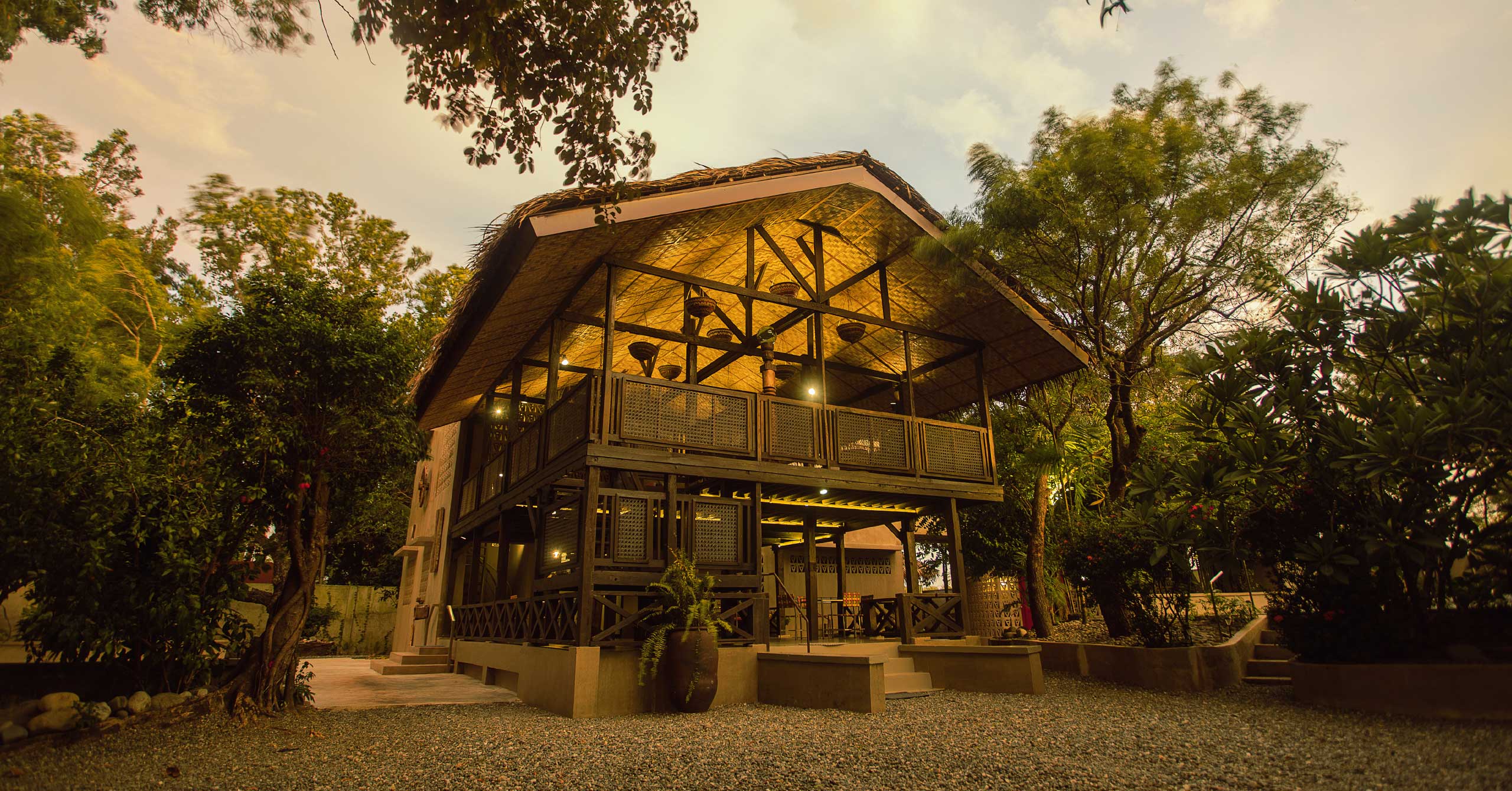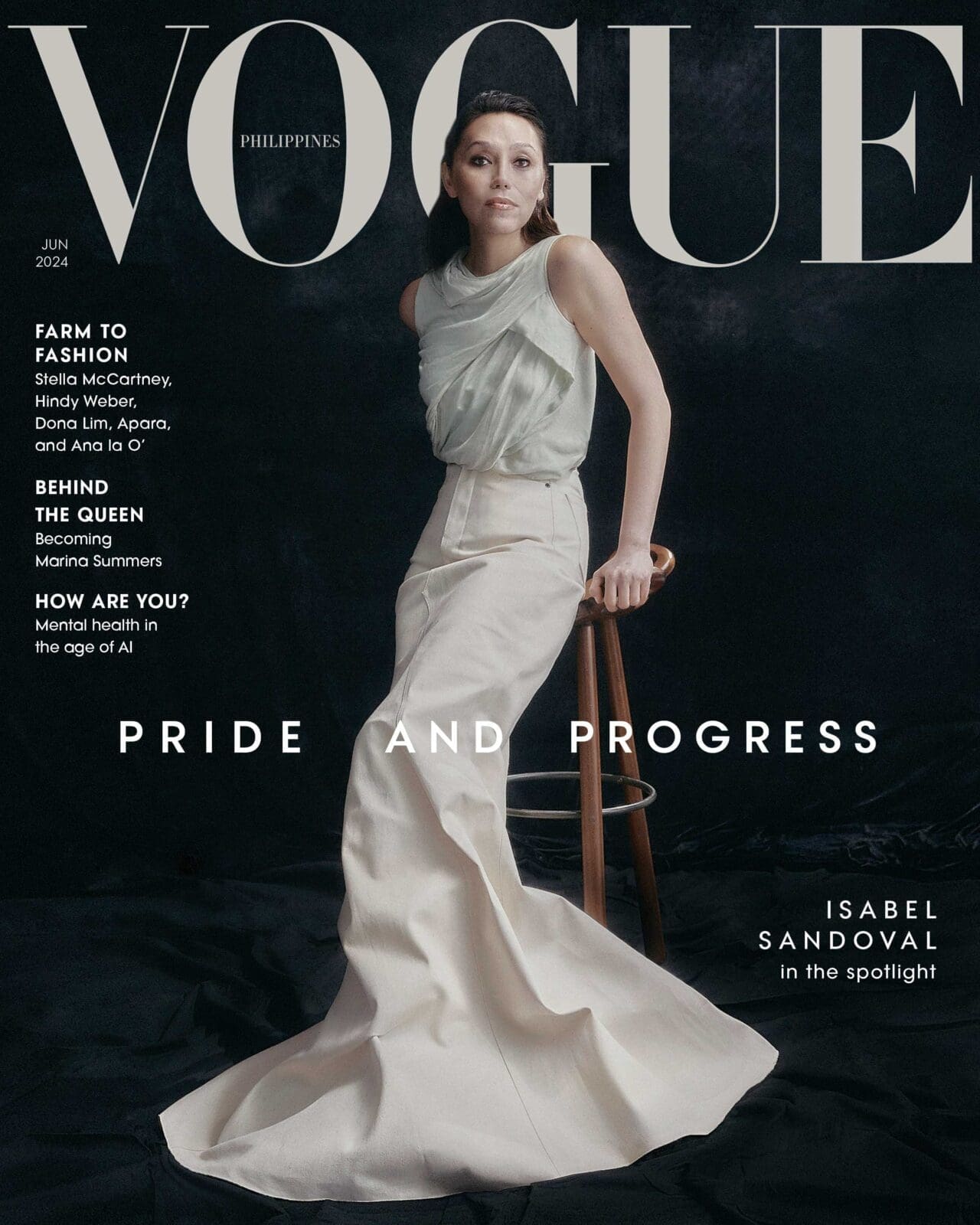Photographed by Conrado Velasco and Geric Cruz for the June 2024 Issue of Vogue Philippines.
Photographed by Conrado Velasco and Geric Cruz for the June 2024 Issue of Vogue Philippines.
The de Vera beach house in Pangasinan is an ode to mother, to lovingly collected objects and the stories they contain.
Most children have imaginary friends. Federico de Vera had an imaginary cabinet of curiosities, one where he would collect sacred relics and rare objects, precious gems and antique finds. Among his nine siblings, he was the one with an eye for detail, noticing when something in their house was out of place or needed attention. He was also the one who absorbed his mother’s passion for jewelry, often helping her choose her adornments when getting ready for special occasions.
When Federico grew up, his cabinet came to life in the form of a gallery known as De Vera, a 33-year-old entity that has seen several homes in San Francisco, where it was born, and New York City, where it came of age. De Vera the gallery is now located in Chelsea, where it is known as a repository of devotional objects, classical portraiture, fine antiques, insect taxidermy, and reinvented jewelry. Weird, beautiful stuff that has traveled through time and space, passing through de Vera’s hands for only a moment before they find new custodians, many of whom are high-profile clients from the entertainment and fashion industry.

The first necklace de Vera ever made was an interpretation of an ancient Greek necklace he saw in a book. Stringing together tiny pearls and seeds, he was reminded of how as a child he would collect shells and driftwood on the beach and cobble them together, and realized he could make things with his own hands. “That’s how it started, and now people mostly think I’m a jeweler,” he says. The necklace is still in his possession today; it was left unsold for a while, until he decided to keep it, a marker of his own memories.
De Vera, who has been living in the United States for over three decades, started coming back to the Philippines more often in the last few years, to spend time with his mother and to put the finishing touches on the family beach house in Pangasinan that he had been remodeling and populating with pieces he has collected throughout the years. “It’s my poem to her, my tribute to her. My mother is the most important person in my life,” de Vera says. “She is a strong-willed woman, and she loves beautiful things.”
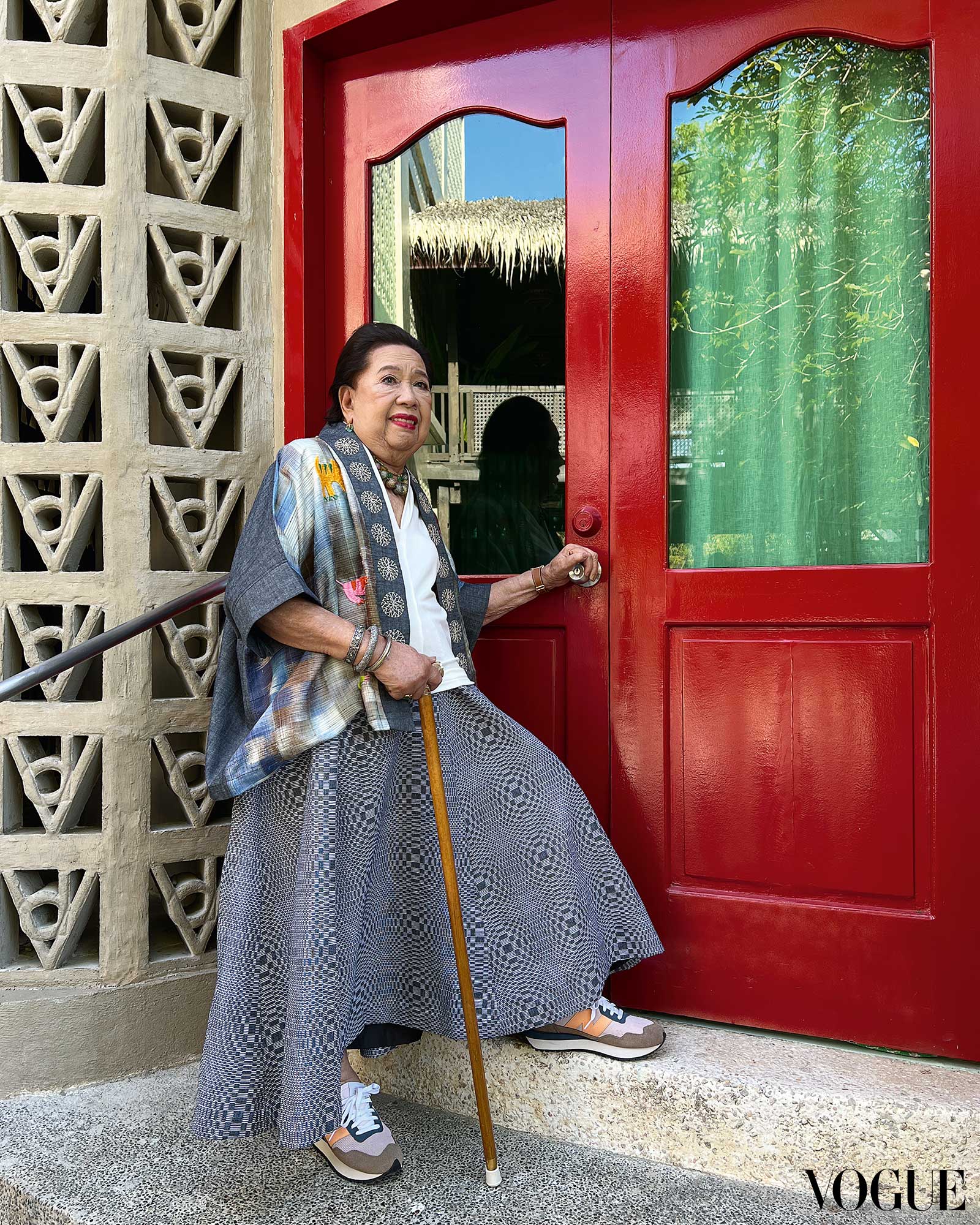
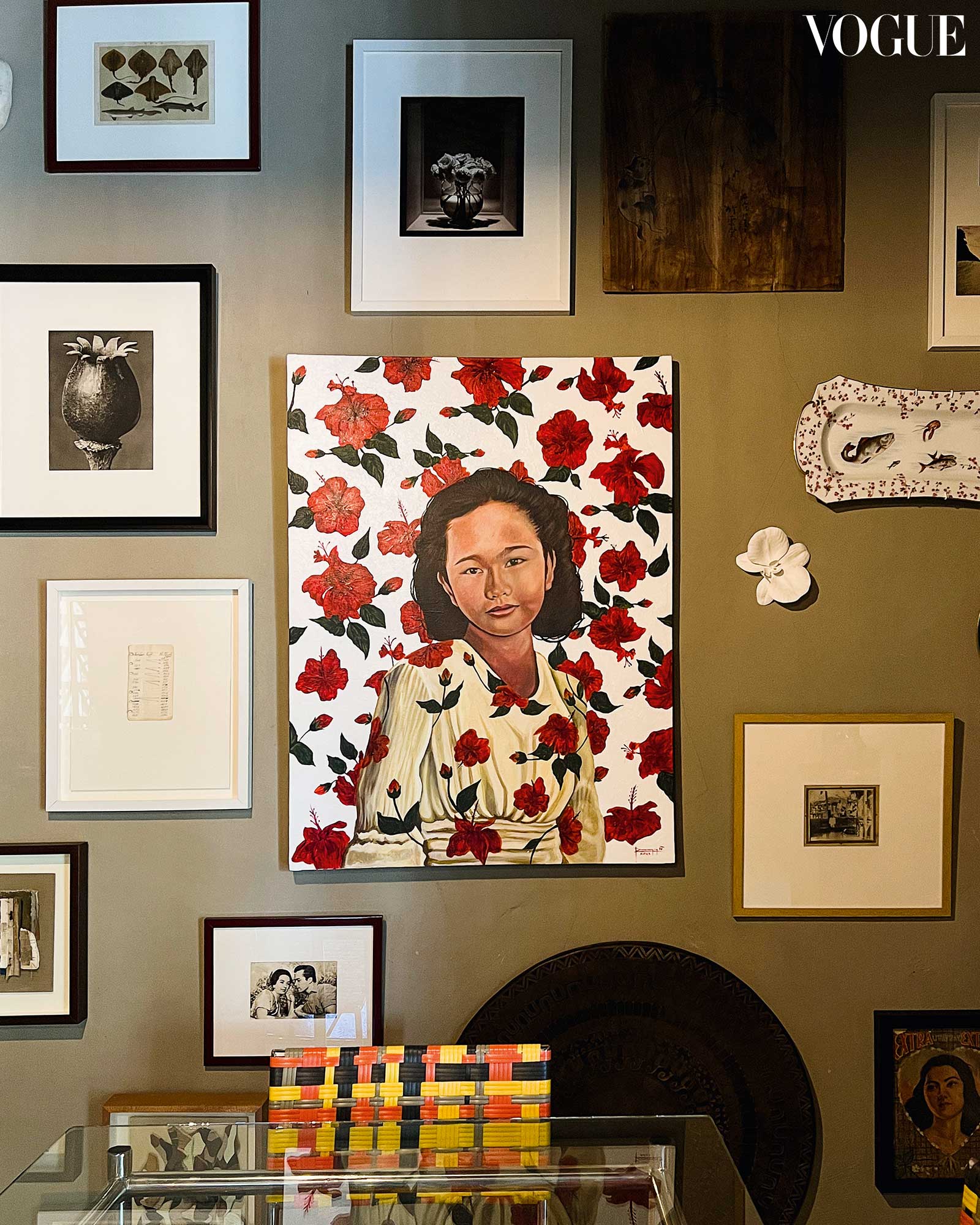
Romana De Vera, who raised 10 children, is an entrepreneurial legend in her home province of Pangasinan. She is the woman behind Romana Peanut Brittle, the crunchy snack that is often associated with Baguio souvenirs, but has been produced in the town of Mangaldan since 1958. “She was the first feminist I have ever known, before I even knew what the word meant,” he says, sharing how she always told his sisters to have their own careers and not let their husbands call the shots. “My mother was the complete opposite of that, she still calls the shots, you know.”
Casa Romana, named after the 91-year-old matriarch, is a blend of an existing structure, the more traditional bamboo and wood pavilion on stilts, with a new construction behind it, a concrete building with breeze blocks for windows, somewhat reminiscent of a desert fortress. Looking closer at the pattern, each small opening turns out to be the “d” and “V” of de Vera, a logo inspired by the Wiener Werkstatte monograms of the early 1900s.

On the washed concrete walls hang weathered items: slabs of wood, an old wheel, woven baskets, carved deities, and petrified sea animals. Some corners feature photographic prints, others framed collections of shells. Standing out in the sea of neutrals and naturals is the double doorway painted bright red—a trademark of Federico’s, seen in his Amenia train station home, and his first San Francisco store, whose only accent of color was a red beam across the ceiling.
The bamboo villa is where Federico has more fun with color, scattering printed throw pillows on outdoor furniture woven in bright patterns and turning large tutup or food covers, woven by the Sama and Tausug people of Mindanao, into lanterns.
The family has always owned the beachside property, but only in recent years the siblings decided to fix it up to make it more inviting and habitable. Federico stepped in and told them in no uncertain terms, “I’m going to do it, and nobody else is going to be involved, okay? It’s my taste or nothing.”
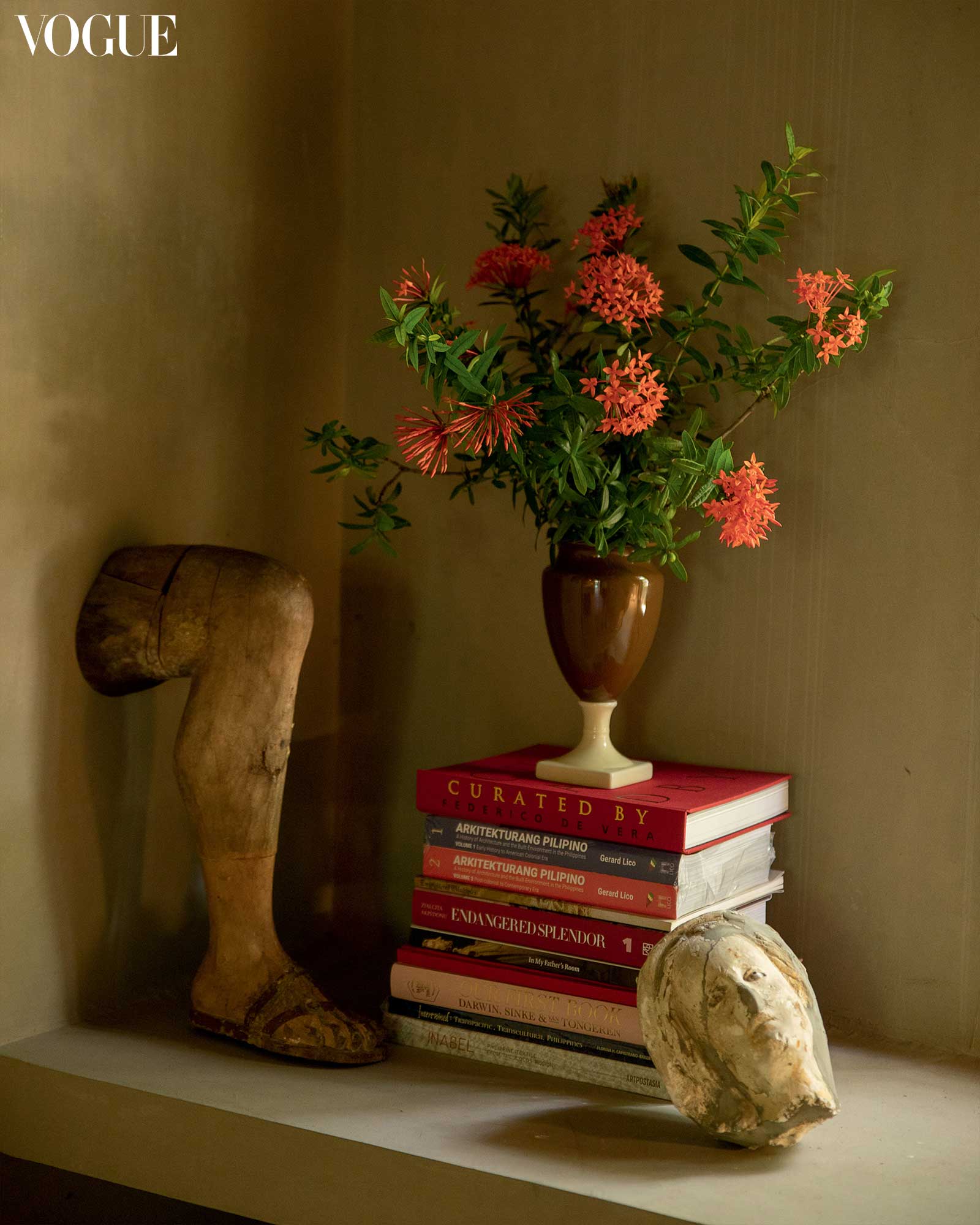

The beach house, to his credit, is significantly pared down compared to his New York abodes, with their galleries of disembodied heads peering down from the walls. De Vera lives in a Manhattan apartment, but spends most weekends in upstate New York, tending to a quiet, art-filled home whose first life saw significantly more traffic as a railway depot, originally built in 1875. In the act of refashioning something new from something old, de Vera’s honors the spirit of what came before.
People have asked him about the style of his houses: is it minimalist, is it maximalist? “My style is there is no style, it’s just ‘anything’ style,” Federico insists, comparing it to the way he cooks, which is simply looking inside the refrigerator and seeing what he can throw together. “That’s basically what I do in my business. That’s what I do in my design of jewelry, and that’s what I do in my design of spaces. It’s a mishmash of everything and I just put it together where it makes sense.” Making sense of it is Federico’s style and his extraordinary skill—the ability to hear what objects from milieus past have to say in the here and now.
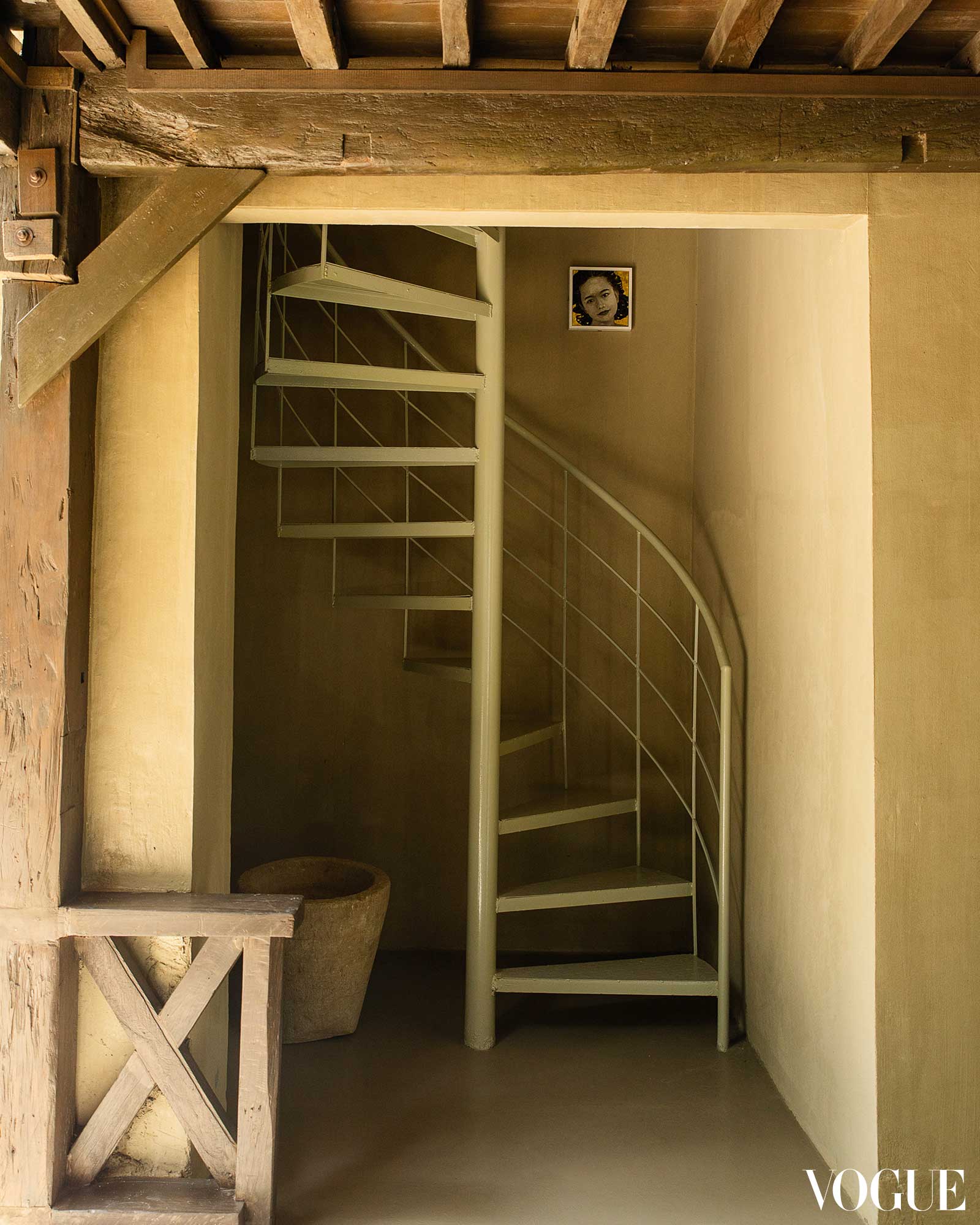
The Manila art world got to experience what a de Vera-designed space looks and feels like with his exhibition at the Ayala Museum in November 2017. Curated By Federico de Vera assembled 300 pieces of Philippine art borrowed from local museums and private collectors, the first time the Ayala Museum has done an exhibition of this type, where the contemporary, the colonial, and the indigenous come together in conversation. “The assemblages and juxtapositions offer fresh perspectives of aesthetics and histories,” Fernando Zobel de Ayala wrote in the exhibition catalog, noting that Federico “possesses a refined Asian sensibility, an Old World baroque proclivity, and a Filipino’s love of contrasting textures.”
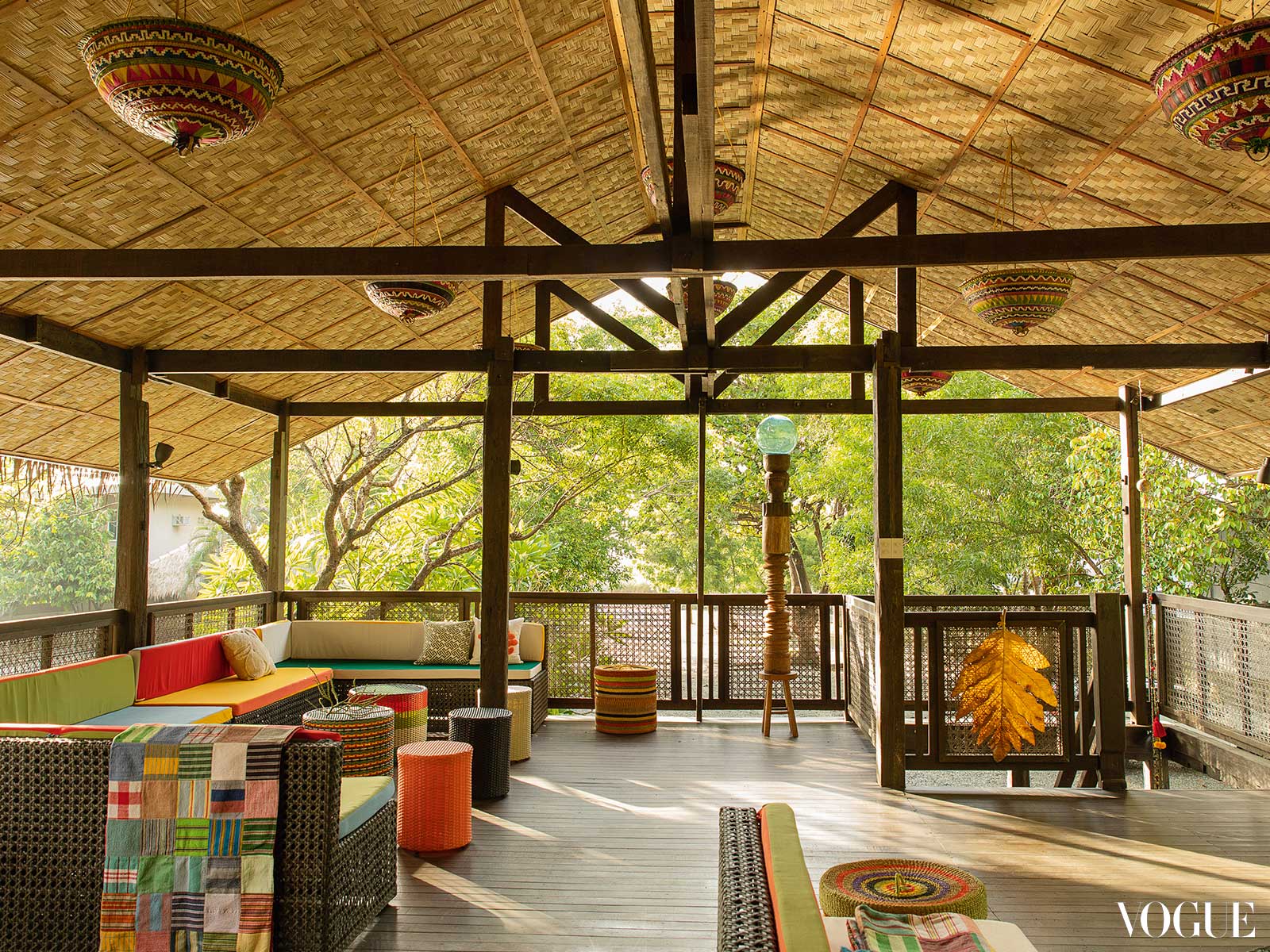
One particular object that de Vera felt called to bring to the beach house was the bust of the Visayan, a piece that had been kept in his apartment for a long time. The bust, which Federico carried in his suitcase, was heavy, in more ways than one. Made by the sculptor Caspar Mayer, the plaster bust was life cast from one of the 1,200 individuals from the Philippines who were shipped to St. Louis, Misssouri to be exhibited at the 1904 World’s Fair. De Vera, who found the bust through a New York City antiques dealer 15 years ago, thought he was very handsome and clever looking. “He kind of looks like Jose Rizal,” he says. Not much else is known about the real Visayan, except that his name might have been Silvestre Gordoncillo. Based on the research of artist and activist Janna Añonuevo Langholz, caretaker of the Philippine Village Historical Site in St. Louis, the Visayans mostly came from Iloilo. In some way, he is now returned to his home country.
De Vera has been contemplating his own journeys back to the Philippines. Despite whatever disagreements may arise, he and his siblings have become closer throughout the whole process. “When we were younger, everybody had their own lives. Now, we’re reconnecting,” he says. “And the more I spend time in the Philippines, the more I understand the idea of coming home.”
